ONLINE VACATION
SOME OF THE SMALLEST ANIMALS IN THE WORLD
2/8/14
Hi Everyone. Today's trip is really different. Instead of visiting
specific cities, we are going to check out some of the smallest
animals in the world. Get ready to say "AWWWW". I hope you enjoy
seeing all these miniature animals. ~Marsha~

ROYAL ANTELOPE: The Royal Antelope (Neotragus Pygmaeus) is a West African
antelope, only 10–12 inches high at the shoulder and weighing only 7–8
pounds. It is the smallest of all antelopes. Their calves are small
enough to fit into the average person's open hand. It is light brown
in color, with a paler underbelly and slightly darker heads and
flanks. The male has small, spike-like horns, about 1 inch long.
 <>
<>


BROOKESIA MICRA CHAMELEON: The Brookesia Micra Chameleon is a species of
chameleon from the islet of Nosy Hara in Antsiranana, Madagascar. It
is the smallest known chameleon and among the smallest reptiles, small
enough to stand on the head of a match. In length, adult Brookesia
Micra can grow up to 1.1 inch.
 <>
<>


BUMBLEBEE BAT: Bumblebee Bats , also known as Kitti's Hog-nosed Bat is
the smallest species of bat and maybe the world's smallest mammal. It
has a reddish-brown or grey coat of fuzzy hair, with a distinctive
pig-like snout. Colonies range greatly in size, with an average of 100
individuals per cave. The bat feeds during short activity periods in
the evening and dawn, foraging around nearby forest areas for insects.
Females give birth annually to a single offspring. They are found in
Thailand and Burma.
 <>
<>
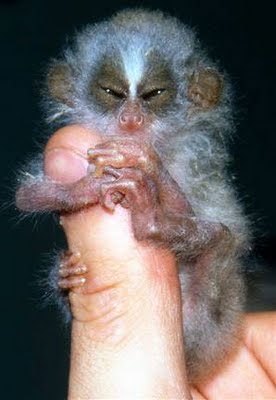

SATOMI'S PYGMY SEAHORSE: Satomi's Pygmy Seahorse (Hippocampus Satomiae)
is the smallest known seahorse in the world with an average length of
0.54 inch and an approximate height of 0.45 inch. They are found at
the Derawan Islands off Kalimantan. From looking at the pictures,
they seem to change color to blend with their surroundings.
 <>
<>


PINK FAIRY ARMADILLO: The pink fairy armadillo (Chlamyphorus truncatus)
also known as the Pichiciego, is the smallest species of armadillo.
This tiny armadillo is found in central Argentina where it inhabits
dry grasslands and sandy plains with thorn bushes and cacti. It is
approximately 3.5-4.5 inches long, excluding the tail, and is pale
rose or pink in color. It has the ability to bury itself completely in
a matter of seconds if frightened. It is a nocturnal animal and
spends most of it's time underground. It burrows small holes near ant
colonies in dry soil, and feeds mainly on ants or various plant and
root material.
 <>
<>


VIRGIN ISLANDS DWARF GECKO: The Virgin Islands Dwarf Geckos
(Sphaerodactylus parthenopion) are typically the size of a coin, about
18mm in length, and one of the smallest terrestrial vertebrates. They
are found in three British Virgin Islands. It was discovered in 1964
and lives on drier hillsides, yet prefers moist places under rocks
because it lacks the adaptations necessary for preventing water loss,
which is a significant problem due to its small body size. On average,
it measures 0.71 inch from its snout to its vent, and is nearly as
small as a U.S. dime. At most, it weighs 0.0053 ounce. The Virgin
Islands Dwarf Gecko has a deep brown color on its upper side, often
with a speckling of darker scales. There are several stripes or bars
of lighter coloration behind the eyes and at the top of the neck that
help distinguish it. There are no differences in coloration between
males and females, although females are slightly larger in size.
 <>
<>


SPECKLED PADLOPER TORTOISE: The Speckled Padloper Tortoise, also known as
Speckled Cape Tortoise, is the smallest tortoise in the world. It is
found in South Africa and Southern Namibia. It lives on granite
outcrops, where it forages among the rocks for the tiny succulent
plants to eat. The males measure 2.4–3.1 inches, while females
measure up to almost 3.9 inches. They weigh about 3.4–5.8 ounces. This
species has a flattened shell with slightly serrated edges. The
orange-brown shell is covered in hundreds of black spots. The males
have a noticeably concave belly. This tiny tortoise can be
distinguished from the other tortoise species by its speckles, and by
five toes on its forefeet, unlike many of its relatives, which have
four toes, on all four feet.
 <>
<>


PYGMY THREE-TOED SLOTH: The Pygmy Three-Toed Sloth is also known as the
Dwarf Sloth or Monk Sloth. It is found on a small island off of the
coast of Panama. They were discovered in 2001. Pygmy Three-toed
Sloths have a tan face with a dark brown band across the brow and
orange eye patches. The back can exhibit either uniform or blotchy
color, but is usually dark brown with an obvious stripe down its back.
Pygmy sloths are unique in that they have long hairs on the crown and
the sides of the head, giving the distinct impression of a hood. They
weigh 5.5 to 7.7 pounds and measure 19 to 21 inches, with a 1.8 to
2.4 inch tail. Their main food is leaves.
 <>
<>


BALUCHISTAN PYGMY JERBOA: The Baluchistan Pygmy Jerboa, also known as
the Dwarf Three-toed Jerboa, is a species of rodent. Adults average
only 1.7 inches in head and body length, with the tail averaging 3.1
inches. Adult females weigh 0.132 ounce. It lives only in Pakistan in
the sand dunes of the desert. It eats seeds and leaves of succulent
plant leaves.
 <>
<>


VECHUR COW: The Vechur Cow is the smallest breed of cattle in the
world only grows to be about 49 INCHES in length and about 34 INCHES
in height. Their average weight is 286 pounds and produces about 3
quarts of milk a day.
 <>
<>


PAEDOPHRYNE AMAUENSIS FROG: Paedophryne Amauensis is a species of
frog from Papua New Guinea discovered in August 2009 by a professor
and student from Louisiana State University. At 0.30 inch in length,
it is the world's smallest known vertebrate. They live on land among
leaves on the ground.
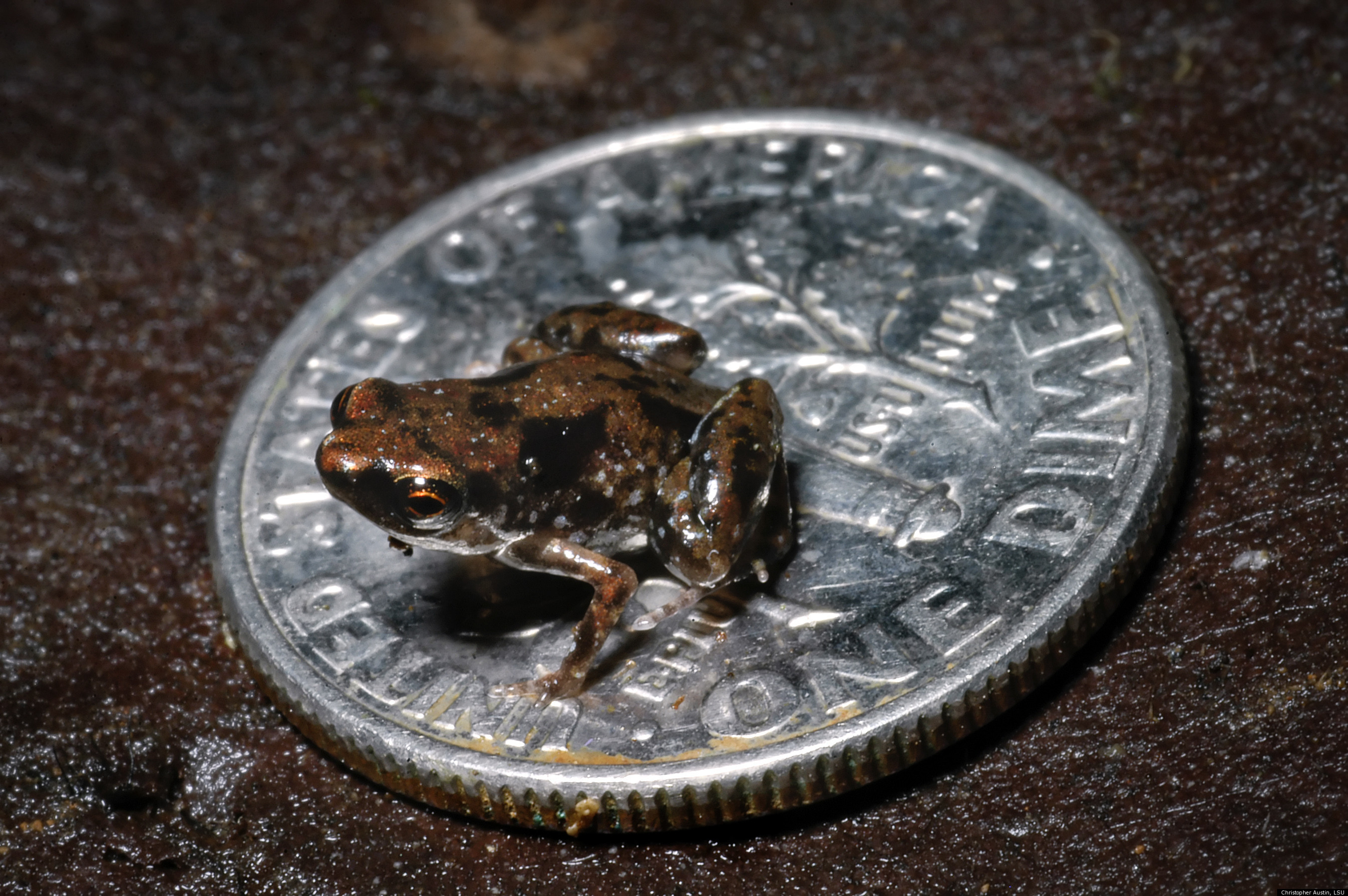 <>
<>


OCTOPUS WOLFI: The Octopus Wolfi is found in the Indo-Pacific Ocean.
It is the world's smallest known octopus. The Octopus Wolfi measures
less than an inch in length. It was discovered and officially
classified in 1913.
 <>
<>


PYGMY GOAT: Pygmy Goats originate in West Africa and were imported to
the United States in the 1950's. They can grow up to 23 inches tall
and can vary widely in color. Their primary diet consists mainly
of greens and grains.
 <>
<>


ETRUSCAN SHREW: The Etruscan Shrew is also known as the Savi’s Pygmy
Shrew, and Pygmy white-toothed shrew. They weigh less than an ounce, br>and a body length of about 1.5 inch. These shrews prefer warm and damp
climates. They live in Europe, North Africa and Malaysia. Their
primary food source is insects.
 <>
<>
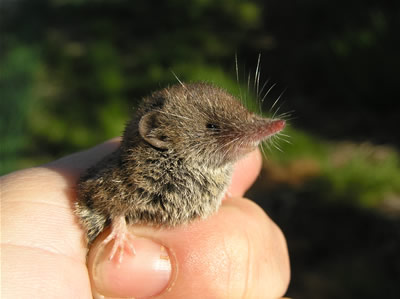

FENNEC FOX: The Fennec Fox is found in the Sahara Desert of North
Africa. Its most distinctive feature is its unusually large ears,
with hearing sensitive enough to hear prey moving underground. It
mainly eats insects, small mammals, and birds. The fennec fox weighs
about 1.5–3.5 pounds , with a body length of between 9–16 inches. It
is around 8 inches tall. The tail has a black tip and is 7–12 inches
long, and the ears can be between 3.9–5.9 inches long.
 <>
<>
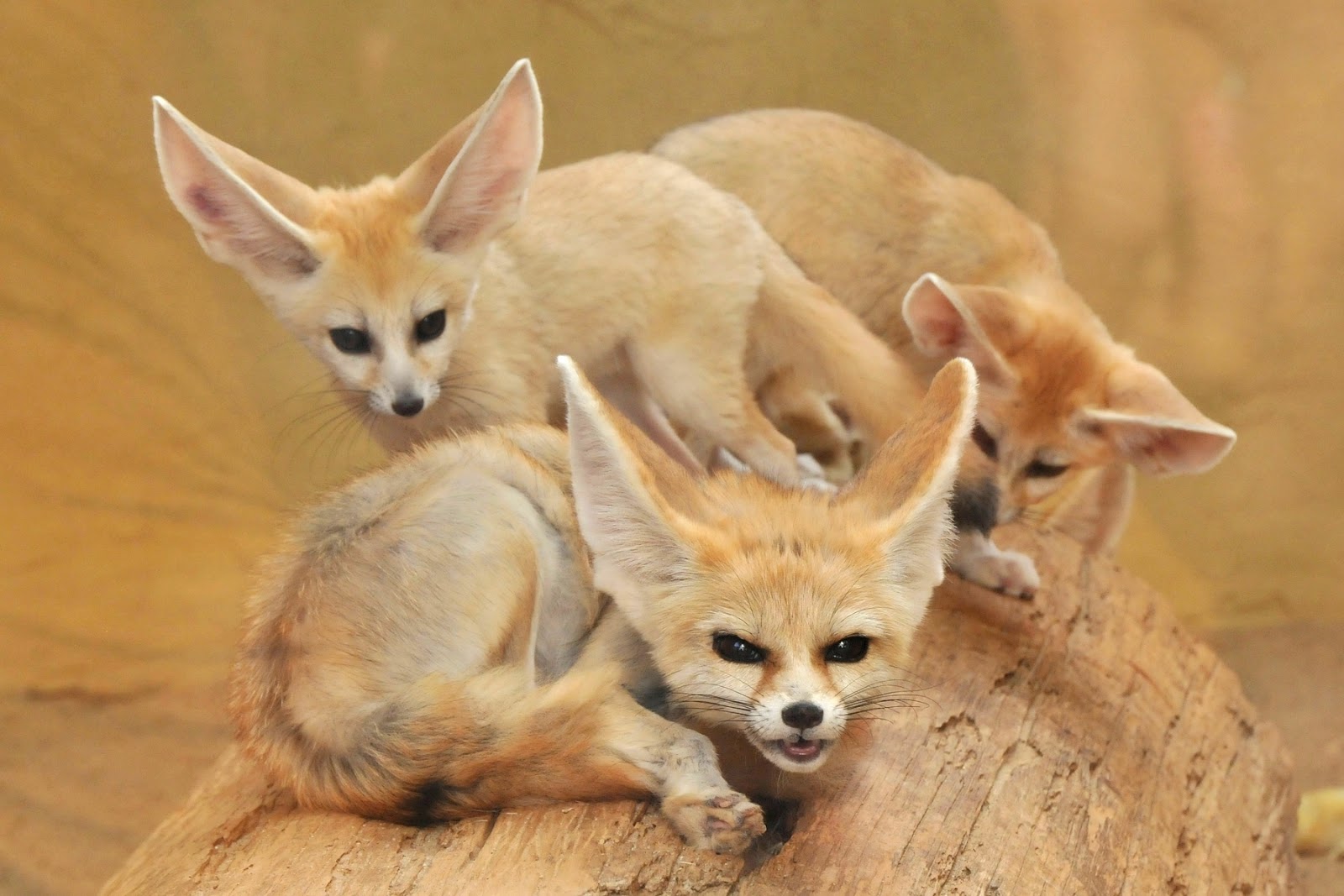

BORNEO PYGMY ELEPHANT: The Borneo elephant adult males are just 5 to 8
feet tall, and the females are 4 to 7 feet in height. They are only
found natively to Borneo.
 <>
<>


BLUE FAIRY PENGUIN: The Blue Fairy Penguin is found in New Zealand and
Australia. They usually grow to an average of 13 inches in height and
17 inches in length. They have slate-blue plumage.
 <>
<>


TAMAULIPAS PYGMY OWL: The Tamaulipas Pygmy Owl is from Mexico. They
grow to be about 5.3 inches long, and weighs about 1.9 pounds.
 <>
<>
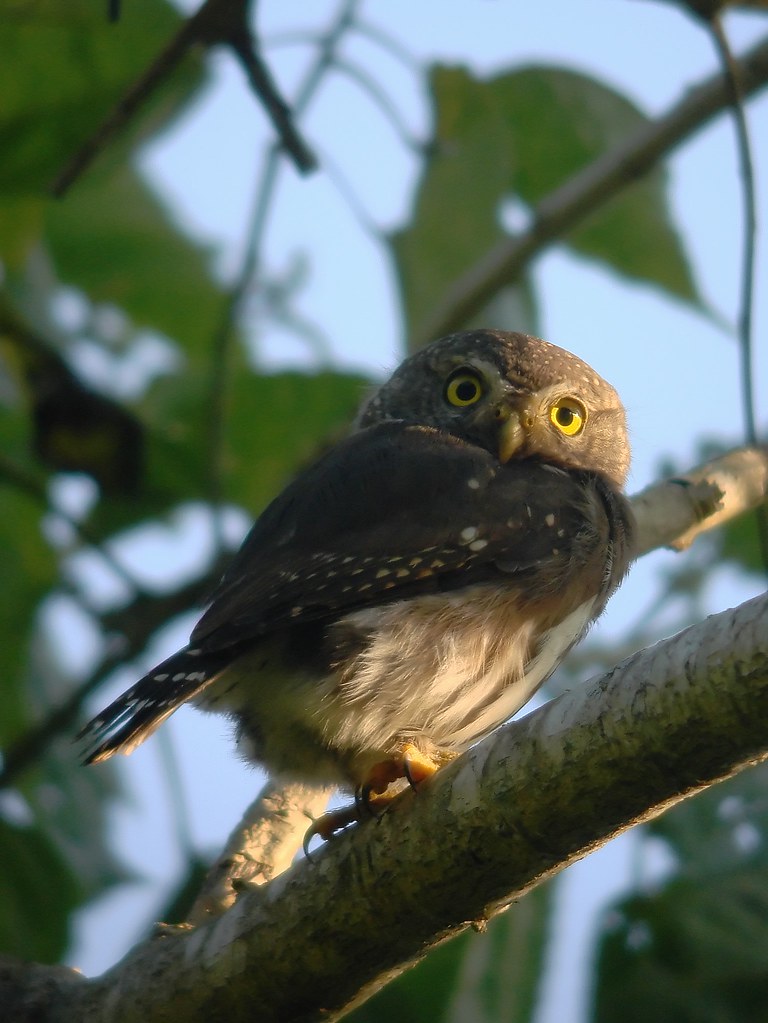

SABAH RHINOCEROS: The Sabah rhinoceros is the world’s smallest rhinoceros
species, with a height of about 3 feet 3 inches. The tiny rhino is
almost extinct, with only 30 to 50 individuals alive in the world. As
far as I can tell, they are native to Borneo.
 <>
<>



specific cities, we are going to check out some of the smallest
animals in the world. Get ready to say "AWWWW". I hope you enjoy
seeing all these miniature animals.
~Marsha~

ROYAL ANTELOPE: The Royal Antelope (Neotragus Pygmaeus) is a West African
antelope, only 10–12 inches high at the shoulder and weighing only 7–8
pounds. It is the smallest of all antelopes. Their calves are small
enough to fit into the average person's open hand. It is light brown
in color, with a paler underbelly and slightly darker heads and
flanks. The male has small, spike-like horns, about 1 inch long.
 <>
<>


BROOKESIA MICRA CHAMELEON: The Brookesia Micra Chameleon is a species of
chameleon from the islet of Nosy Hara in Antsiranana, Madagascar. It
is the smallest known chameleon and among the smallest reptiles, small
enough to stand on the head of a match. In length, adult Brookesia
Micra can grow up to 1.1 inch.
 <>
<>


BUMBLEBEE BAT: Bumblebee Bats , also known as Kitti's Hog-nosed Bat is
the smallest species of bat and maybe the world's smallest mammal. It
has a reddish-brown or grey coat of fuzzy hair, with a distinctive
pig-like snout. Colonies range greatly in size, with an average of 100
individuals per cave. The bat feeds during short activity periods in
the evening and dawn, foraging around nearby forest areas for insects.
Females give birth annually to a single offspring. They are found in
Thailand and Burma.
 <>
<>


SATOMI'S PYGMY SEAHORSE: Satomi's Pygmy Seahorse (Hippocampus Satomiae)
is the smallest known seahorse in the world with an average length of
0.54 inch and an approximate height of 0.45 inch. They are found at
the Derawan Islands off Kalimantan. From looking at the pictures,
they seem to change color to blend with their surroundings.
 <>
<>


PINK FAIRY ARMADILLO: The pink fairy armadillo (Chlamyphorus truncatus)
also known as the Pichiciego, is the smallest species of armadillo.
This tiny armadillo is found in central Argentina where it inhabits
dry grasslands and sandy plains with thorn bushes and cacti. It is
approximately 3.5-4.5 inches long, excluding the tail, and is pale
rose or pink in color. It has the ability to bury itself completely in
a matter of seconds if frightened. It is a nocturnal animal and
spends most of it's time underground. It burrows small holes near ant
colonies in dry soil, and feeds mainly on ants or various plant and
root material.



VIRGIN ISLANDS DWARF GECKO: The Virgin Islands Dwarf Geckos
(Sphaerodactylus parthenopion) are typically the size of a coin, about
18mm in length, and one of the smallest terrestrial vertebrates. They
are found in three British Virgin Islands. It was discovered in 1964
and lives on drier hillsides, yet prefers moist places under rocks
because it lacks the adaptations necessary for preventing water loss,
which is a significant problem due to its small body size. On average,
it measures 0.71 inch from its snout to its vent, and is nearly as
small as a U.S. dime. At most, it weighs 0.0053 ounce. The Virgin
Islands Dwarf Gecko has a deep brown color on its upper side, often
with a speckling of darker scales. There are several stripes or bars
of lighter coloration behind the eyes and at the top of the neck that
help distinguish it. There are no differences in coloration between
males and females, although females are slightly larger in size.
 <>
<>


SPECKLED PADLOPER TORTOISE: The Speckled Padloper Tortoise, also known as
Speckled Cape Tortoise, is the smallest tortoise in the world. It is
found in South Africa and Southern Namibia. It lives on granite
outcrops, where it forages among the rocks for the tiny succulent
plants to eat. The males measure 2.4–3.1 inches, while females
measure up to almost 3.9 inches. They weigh about 3.4–5.8 ounces. This
species has a flattened shell with slightly serrated edges. The
orange-brown shell is covered in hundreds of black spots. The males
have a noticeably concave belly. This tiny tortoise can be
distinguished from the other tortoise species by its speckles, and by
five toes on its forefeet, unlike many of its relatives, which have
four toes, on all four feet.
 <>
<>


PYGMY THREE-TOED SLOTH: The Pygmy Three-Toed Sloth is also known as the
Dwarf Sloth or Monk Sloth. It is found on a small island off of the
coast of Panama. They were discovered in 2001. Pygmy Three-toed
Sloths have a tan face with a dark brown band across the brow and
orange eye patches. The back can exhibit either uniform or blotchy
color, but is usually dark brown with an obvious stripe down its back.
Pygmy sloths are unique in that they have long hairs on the crown and
the sides of the head, giving the distinct impression of a hood. They
weigh 5.5 to 7.7 pounds and measure 19 to 21 inches, with a 1.8 to
2.4 inch tail. Their main food is leaves.
 <>
<>


BALUCHISTAN PYGMY JERBOA: The Baluchistan Pygmy Jerboa, also known as
the Dwarf Three-toed Jerboa, is a species of rodent. Adults average
only 1.7 inches in head and body length, with the tail averaging 3.1
inches. Adult females weigh 0.132 ounce. It lives only in Pakistan in
the sand dunes of the desert. It eats seeds and leaves of succulent
plant leaves.
 <>
<>


VECHUR COW: The Vechur Cow is the smallest breed of cattle in the
world only grows to be about 49 INCHES in length and about 34 INCHES
in height. Their average weight is 286 pounds and produces about 3
quarts of milk a day.
 <>
<>


PAEDOPHRYNE AMAUENSIS FROG: Paedophryne Amauensis is a species of
frog from Papua New Guinea discovered in August 2009 by a professor
and student from Louisiana State University. At 0.30 inch in length,
it is the world's smallest known vertebrate. They live on land among
leaves on the ground.
 <>
<>


OCTOPUS WOLFI: The Octopus Wolfi is found in the Indo-Pacific Ocean.
It is the world's smallest known octopus. The Octopus Wolfi measures
less than an inch in length. It was discovered and officially
classified in 1913.
 <>
<>


PYGMY GOAT: Pygmy Goats originate in West Africa and were imported to
the United States in the 1950's. They can grow up to 23 inches tall
and can vary widely in color. Their primary diet consists mainly
of greens and grains.
 <>
<>


ETRUSCAN SHREW: The Etruscan Shrew is also known as the Savi’s Pygmy
Shrew, and Pygmy white-toothed shrew. They weigh less than an ounce, br>and a body length of about 1.5 inch. These shrews prefer warm and damp
climates. They live in Europe, North Africa and Malaysia. Their
primary food source is insects.
 <>
<>


FENNEC FOX: The Fennec Fox is found in the Sahara Desert of North
Africa. Its most distinctive feature is its unusually large ears,
with hearing sensitive enough to hear prey moving underground. It
mainly eats insects, small mammals, and birds. The fennec fox weighs
about 1.5–3.5 pounds , with a body length of between 9–16 inches. It
is around 8 inches tall. The tail has a black tip and is 7–12 inches
long, and the ears can be between 3.9–5.9 inches long.
 <>
<>


BORNEO PYGMY ELEPHANT: The Borneo elephant adult males are just 5 to 8
feet tall, and the females are 4 to 7 feet in height. They are only
found natively to Borneo.
 <>
<>


BLUE FAIRY PENGUIN: The Blue Fairy Penguin is found in New Zealand and
Australia. They usually grow to an average of 13 inches in height and
17 inches in length. They have slate-blue plumage.
 <>
<>


TAMAULIPAS PYGMY OWL: The Tamaulipas Pygmy Owl is from Mexico. They
grow to be about 5.3 inches long, and weighs about 1.9 pounds.
 <>
<>


SABAH RHINOCEROS: The Sabah rhinoceros is the world’s smallest rhinoceros
species, with a height of about 3 feet 3 inches. The tiny rhino is
almost extinct, with only 30 to 50 individuals alive in the world. As
far as I can tell, they are native to Borneo.
 <>
<>



Information from Wikipedia and ViralNova
This is a MelloMarsha creation
I do not take credit for the pictures
Thanks to the respective photographers
2-7-14
BACK TO THE ONLINE VACATION INDEX